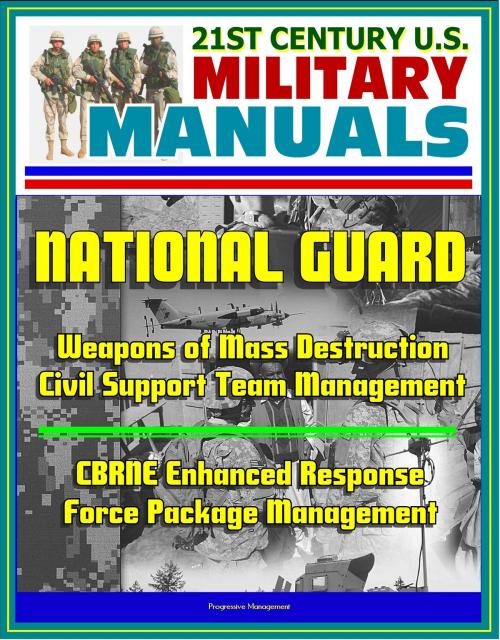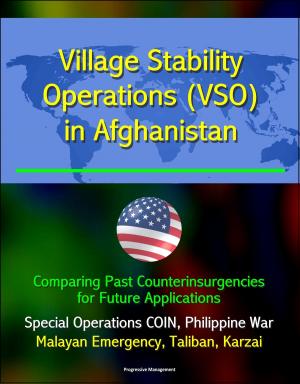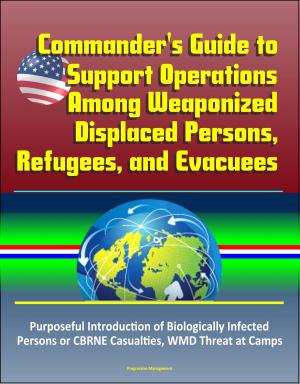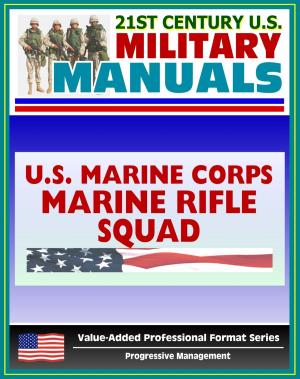21st Century U.S. Military Manuals: National Guard Weapons of Mass Destruction Civil Support Team Management, CBRNE Enhanced Response Force Package Management
Nonfiction, History, Military, Biological & Chemical Warfare, Nuclear Warfare| Author: | Progressive Management | ISBN: | 9781301574193 |
| Publisher: | Progressive Management | Publication: | June 7, 2013 |
| Imprint: | Smashwords Edition | Language: | English |
| Author: | Progressive Management |
| ISBN: | 9781301574193 |
| Publisher: | Progressive Management |
| Publication: | June 7, 2013 |
| Imprint: | Smashwords Edition |
| Language: | English |
Weapons of Mass Destruction Civil Support Team Management - This regulation instruction prescribes policies, procedures, and responsibilities governing the employment of National Guard Weapons of Mass Destruction - Civil Support Teams (WMD-CSTs) in support of the National Guard homeland security, homeland defense, contingency operations, special events, incident of national significance, and Defense Support of Civil Authorities (DSCA) mission.
National Guard CBRNE Enhanced Response Force Package Management - This regulation delineates the responsibilities and details the processes and procedures for management of the National Guard (NG) Chemical, Biological, Radiological, Nuclear, and high-yield Explosive (CBRNE) Enhanced Response Force Package (NG CERFP). In the United States, the civil emergency management structure manages the consequences of the release of a Weapon of Mass Destruction (WMD) involving CBRNE devices. The National Guard leverages its war fighting capability to support the civil authorities by providing a disciplined, well trained, and well equipped organization to supplement local, state, and federal efforts to manage the potentially catastrophic effects of terrorism, or provide special technical support to augment specific needs of the Incident Commander (IC). NG CERFPs are designed and trained to provide search, extraction, medical triage, and decontamination of casualties during CBRNE events and advice and assistance to the IC, State Emergency Management, the State's Joint Forces Headquarters (JFHQ-State), the Adjutant General, the Governor, and other key officials, including representatives of federal agencies. The capabilities of the NG CERFP for search, extraction, medical triage and treatment, decontamination, and remains recovery can also be used in support of natural disasters where individuals have been trapped in structures and/or require decontamination from exposure to toxic materials such as petroleum products, pesticides, raw sewage, and structure debris that have been spread through flooding, explosion, or other means. This regulation establishes the processes and standards for synchronized, integrated, and seamless NG CERFP employment on short notice to assist local and state governments in protecting public health and safety.
WMD Civil Support Contents: References • 1-2 * Explanation of Abbreviations and Terms • 1-3 * Responsibilities • 1-4 * Exception to Policy • 1-5 * WMD-CST Overview • 1-6 * The National Response • 1-7 * Chapter 2 * WMD-CST Response Management Plan * Introduction • 2-1 * WMD-CST Response Sectors • 2-2 * WMD-CST Response Status • 2-3 * WMD-CST Response Management Planning Factors • 2-4 * Deployment Standards • 2-5 * Chapter 3 * WMD-CST Mission Requests and Validations * Introduction • 3-1 * Mission Categories • 3-2 * Request Validation • 3-3 * Responsibilities • 3-4 * WMD-CST Support Requests • 3-5 * Chapter 4 * Alert and Deployment * Unit Recall and Predeployment Planning • 4-1 * Movement Planning Guidance • 4-2 * Transit Timelines and Considerations for Movement • 4-3 * Rapid Reaction Airlift for an Unplanned Event • 4-4 * Plans and Orders • 4-5 * Chapter 5 * Command and Control * State and Federal Authorities • 5-1 * Title 32 Status • 5-2 * Title 10 Status • 5-3 * Federal Support • 5-4 * Relationships with Other Military Response Elements • 5-5 * Chapter 6 * Reporting * Critical Information Requirements • 6-1 * Reporting Procedures • 6-2 * Special Reporting for Serious Incidents • 6-3 * Reporting before Missions ORSITREP • 6-4 * Unit Status Report (USR) Reporting Procedures • 6-5 * Reporting after Missions • 6-6 * Quarterly Significant Activity Forecast • 6-7 * Chapter 7 * Mission Execution * Adaptability
Weapons of Mass Destruction Civil Support Team Management - This regulation instruction prescribes policies, procedures, and responsibilities governing the employment of National Guard Weapons of Mass Destruction - Civil Support Teams (WMD-CSTs) in support of the National Guard homeland security, homeland defense, contingency operations, special events, incident of national significance, and Defense Support of Civil Authorities (DSCA) mission.
National Guard CBRNE Enhanced Response Force Package Management - This regulation delineates the responsibilities and details the processes and procedures for management of the National Guard (NG) Chemical, Biological, Radiological, Nuclear, and high-yield Explosive (CBRNE) Enhanced Response Force Package (NG CERFP). In the United States, the civil emergency management structure manages the consequences of the release of a Weapon of Mass Destruction (WMD) involving CBRNE devices. The National Guard leverages its war fighting capability to support the civil authorities by providing a disciplined, well trained, and well equipped organization to supplement local, state, and federal efforts to manage the potentially catastrophic effects of terrorism, or provide special technical support to augment specific needs of the Incident Commander (IC). NG CERFPs are designed and trained to provide search, extraction, medical triage, and decontamination of casualties during CBRNE events and advice and assistance to the IC, State Emergency Management, the State's Joint Forces Headquarters (JFHQ-State), the Adjutant General, the Governor, and other key officials, including representatives of federal agencies. The capabilities of the NG CERFP for search, extraction, medical triage and treatment, decontamination, and remains recovery can also be used in support of natural disasters where individuals have been trapped in structures and/or require decontamination from exposure to toxic materials such as petroleum products, pesticides, raw sewage, and structure debris that have been spread through flooding, explosion, or other means. This regulation establishes the processes and standards for synchronized, integrated, and seamless NG CERFP employment on short notice to assist local and state governments in protecting public health and safety.
WMD Civil Support Contents: References • 1-2 * Explanation of Abbreviations and Terms • 1-3 * Responsibilities • 1-4 * Exception to Policy • 1-5 * WMD-CST Overview • 1-6 * The National Response • 1-7 * Chapter 2 * WMD-CST Response Management Plan * Introduction • 2-1 * WMD-CST Response Sectors • 2-2 * WMD-CST Response Status • 2-3 * WMD-CST Response Management Planning Factors • 2-4 * Deployment Standards • 2-5 * Chapter 3 * WMD-CST Mission Requests and Validations * Introduction • 3-1 * Mission Categories • 3-2 * Request Validation • 3-3 * Responsibilities • 3-4 * WMD-CST Support Requests • 3-5 * Chapter 4 * Alert and Deployment * Unit Recall and Predeployment Planning • 4-1 * Movement Planning Guidance • 4-2 * Transit Timelines and Considerations for Movement • 4-3 * Rapid Reaction Airlift for an Unplanned Event • 4-4 * Plans and Orders • 4-5 * Chapter 5 * Command and Control * State and Federal Authorities • 5-1 * Title 32 Status • 5-2 * Title 10 Status • 5-3 * Federal Support • 5-4 * Relationships with Other Military Response Elements • 5-5 * Chapter 6 * Reporting * Critical Information Requirements • 6-1 * Reporting Procedures • 6-2 * Special Reporting for Serious Incidents • 6-3 * Reporting before Missions ORSITREP • 6-4 * Unit Status Report (USR) Reporting Procedures • 6-5 * Reporting after Missions • 6-6 * Quarterly Significant Activity Forecast • 6-7 * Chapter 7 * Mission Execution * Adaptability















